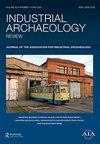走进盥洗室:调查曼彻斯特的公共浴室和盥洗室
IF 0.1
4区 历史学
0 ARCHAEOLOGY
引用次数: 0
摘要
摘要曼彻斯特从18世纪末开始以惊人的速度发展,到19世纪30年代成为世界上第一个工业城市。它的工业实力得益于来自全国各地的杰出工程人才,再加上前所未有的大规模工人迁移。到19世纪中期,城市贫困人口的生活条件、环境卫生和健康已成为许多城镇社会关注的紧迫问题,而公共浴室和洗衣房的引入是早期的补救措施。这些重要设施代表了第一批明确为穷人实施的土木工程项目,其中一些最早的项目是由私营企业在曼彻斯特和索尔福德建立的,并将创新技术与令人印象深刻的建筑细节相结合,散发出公民自豪感,为后来的游泳池树立了高标准。自2014年以来,这些开创性的公共浴场中的几个已经进行了考古发掘,为理解这种重要但日益减少的纪念碑类型做出了重要贡献。本文章由计算机程序翻译,如有差异,请以英文原文为准。
Coming Out in the Wash: Investigating Manchester’s Public Baths and Wash-houses
ABSTRACT Manchester experienced an astonishing rate of growth from the late 18th century to become the first industrial town in the world by the 1830s. Its industrial prowess was fuelled by remarkable engineering talent that was drawn from across the country, coupled with the migration of workers on a scale that was unprecedented and unforeseen. The living conditions, sanitation and health of the burgeoning ranks of urban poor had become a pressing issue for social concern in many towns by the mid-19th century, and the introduction of public baths and wash-houses was an early attempt at redress. These important facilities represented the first civil-engineering projects that were implemented explicitly for the poor, and some of the earliest in the country were established in Manchester and Salford by private enterprise and combined innovative technology with impressive architectural detailing that exuded civic pride, setting a high standard for later swimming baths. Several of these pioneering public baths have been subject to archaeological excavation since 2014, making an important contribution to understanding this significant but dwindling monument type.
求助全文
通过发布文献求助,成功后即可免费获取论文全文。
去求助
来源期刊

Industrial Archaeology Review
Multiple-
CiteScore
0.40
自引率
66.70%
发文量
26
期刊介绍:
Industrial Archaeology Review aims to publish research in industrial archaeology, which is defined as a period study embracing the tangible evidence of social, economic and technological development in the period since industrialisation, generally from the early-18th century onwards. It is a peer-reviewed academic journal, with scholarly standards of presentation, yet seeks to encourage submissions from both amateurs and professionals which will inform all those working in the field of current developments. Industrial Archaeology Review is the journal of the Association for Industrial Archaeology. Published twice a year, the focal point and common theme of its contents is the surviving evidence of industrial activity.
 求助内容:
求助内容: 应助结果提醒方式:
应助结果提醒方式:


